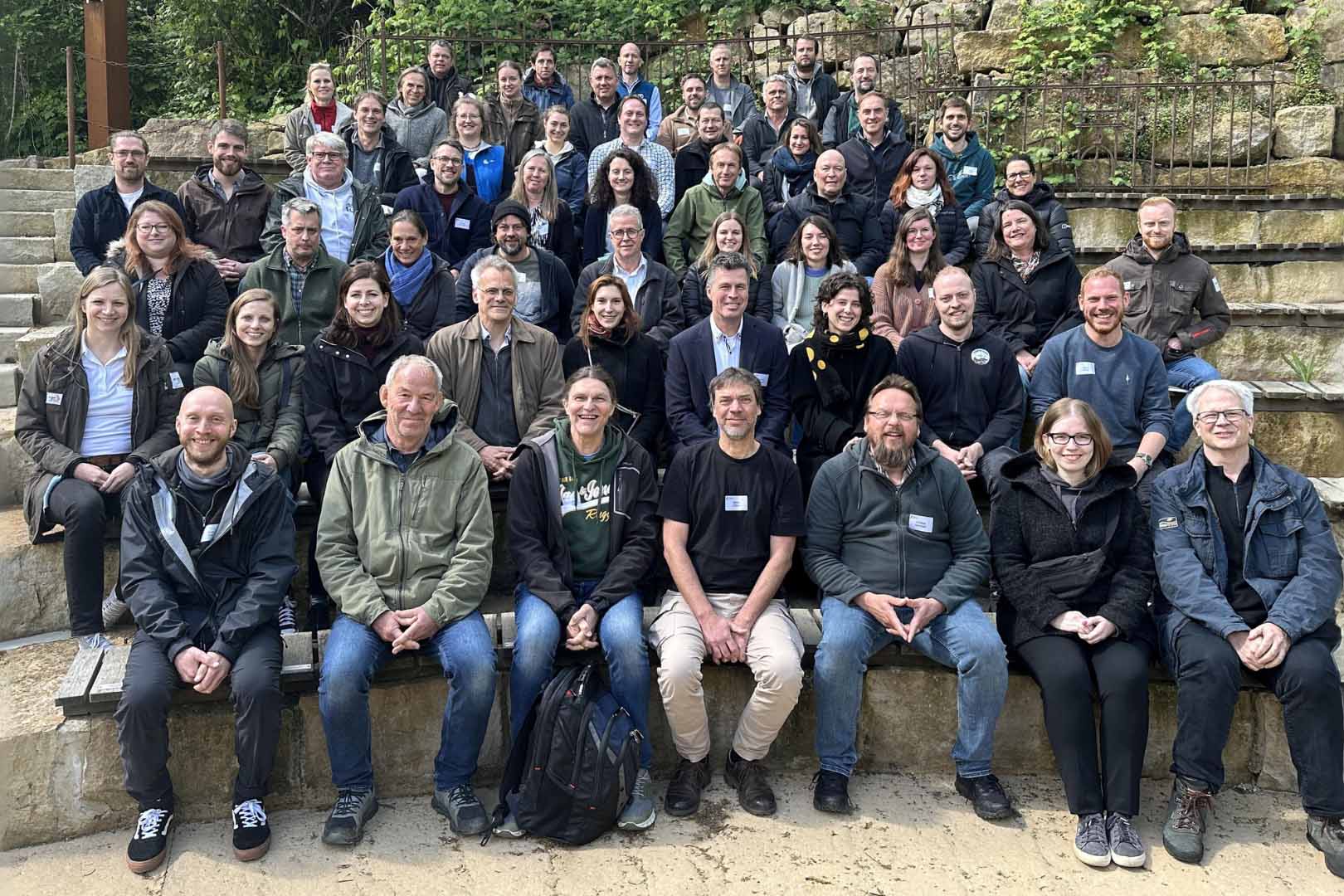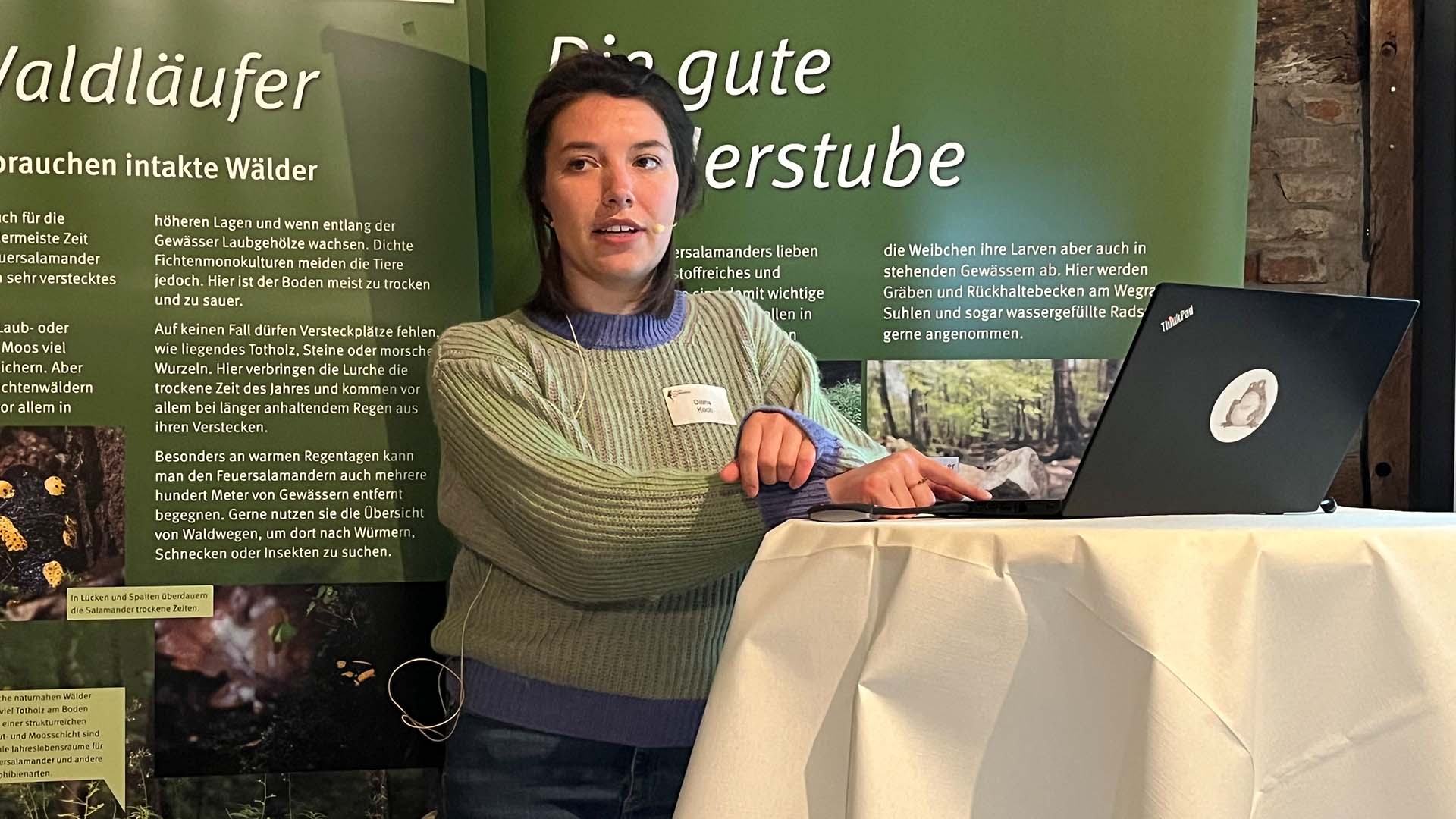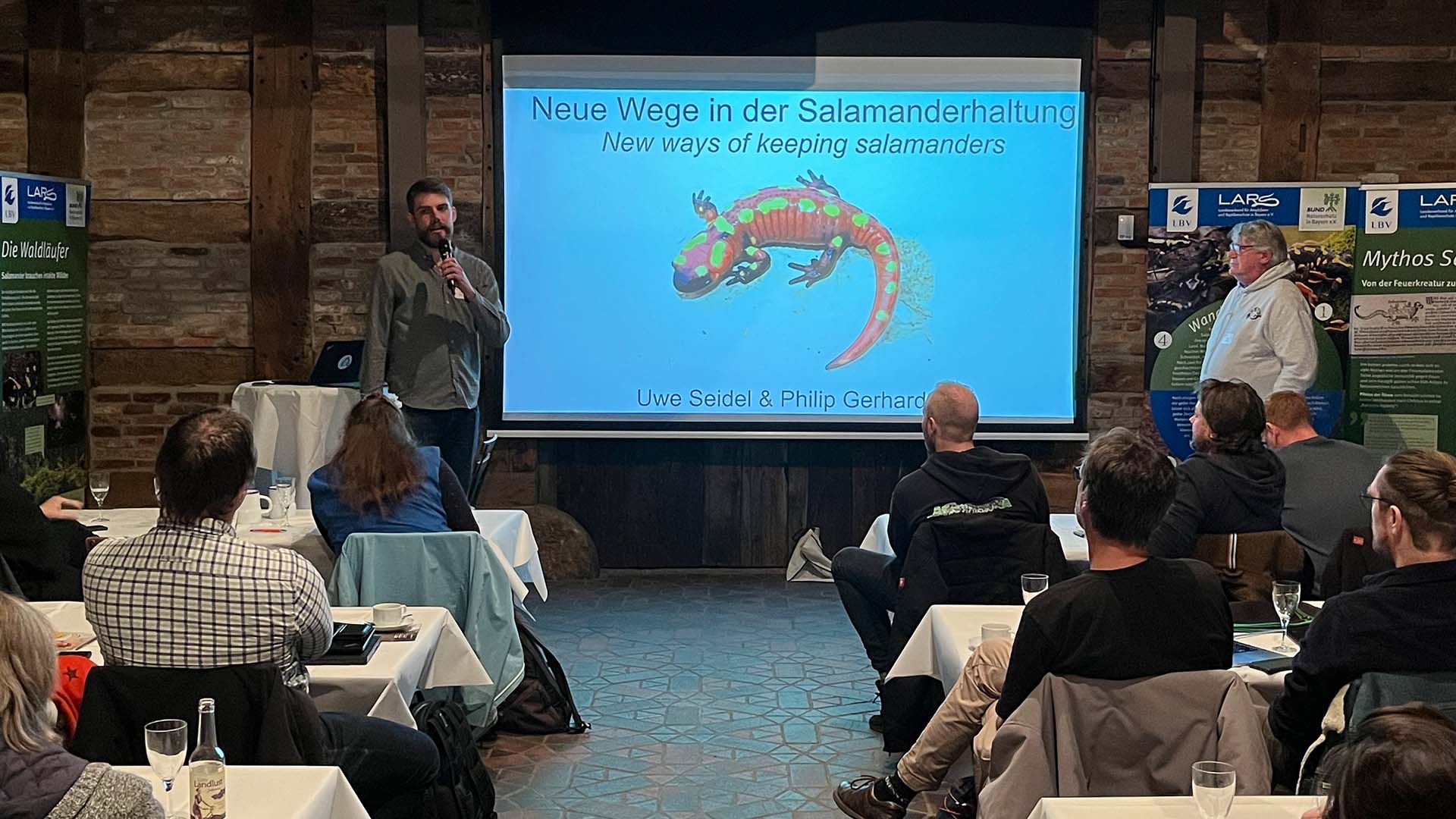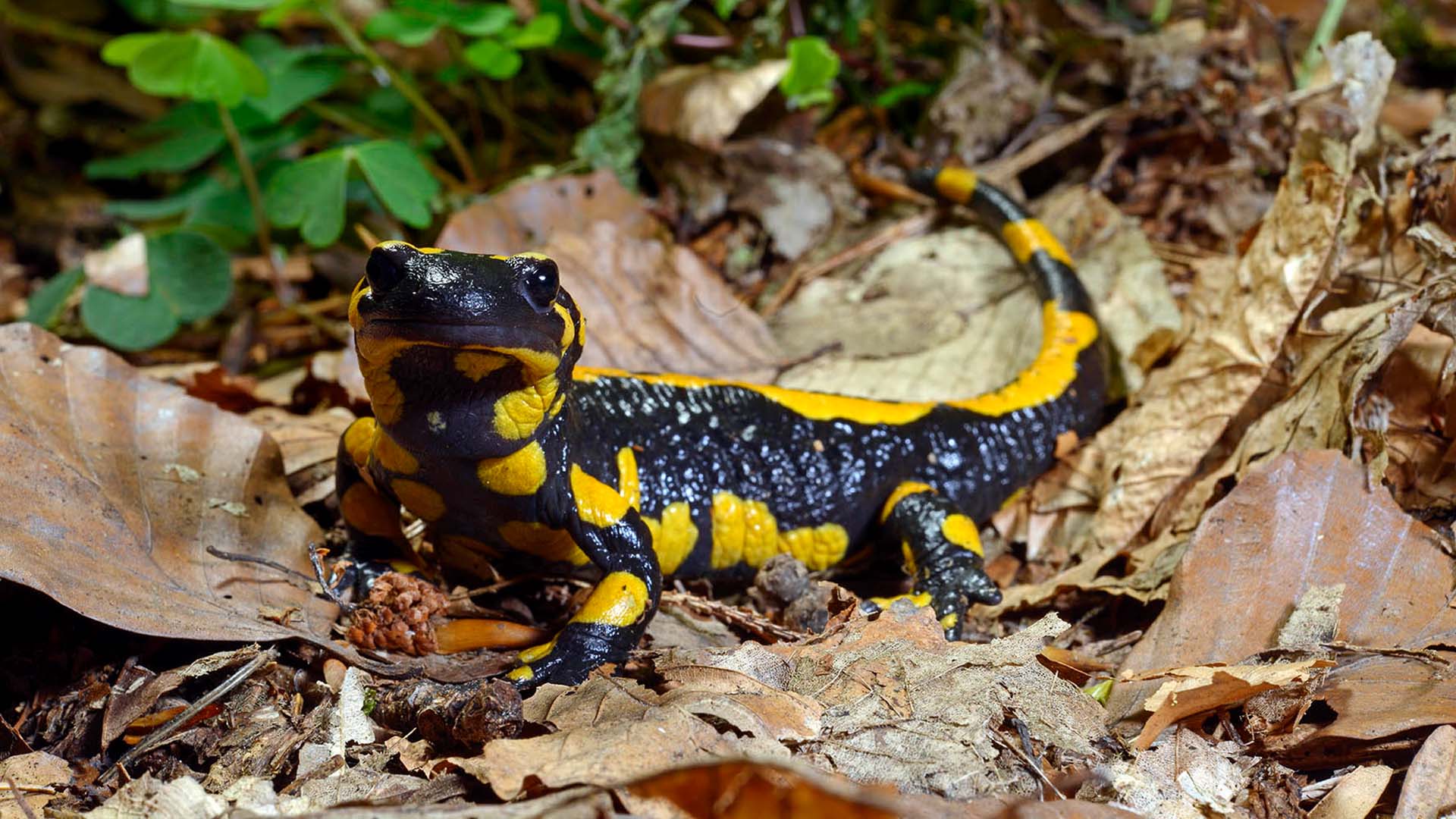
The Fire Salamander is probably our most conspicuous native tailed amphibian. Germany has a special responsibility for this species, which is widespread in Europe, with numerous occurrences and three different genetic lines at the northern edge of its range. But the species is in danger. Not only is it running out of habitats and road traffic and invasive predators such as the raccoon are taking a heavy toll – in 2013, a new, aggressive fungus was discovered that was presumably introduced from Asia and has devastating effects on fire salamander populations. The ‘salamander eater’ (Bsal) causes mass mortality and even the extinction of entire populations and continues to spread in Germany year after year.
Kick-off for the network of salamander savers
Numerous representatives from research institutions and nature conservation organisations to zoos and private animal keepers are currently working on researching the Bsal salamander fungus, monitoring salamander populations, practical nature conservation measures in the habitat (in situ) and gaining knowledge by keeping and establishing conservation breeding programmes for individual populations in human care (ex situ).
The problem: Up to now, there has been a lack of centralised recording of the large amount of information and coordination of the individual measures. This is why Citizen Conservation, Frogs & Friends and other partners invited around 60 representatives of key stakeholders to a large Fire Salamander Symposium at Hanover Adventure Zoo from 17 to 19 April 2024. The meeting not only served as a forum for professional dialogue, but also marked the launch of Feuersalamander.NET, a network for the protection of the popular black and yellow species.
One contact for all players
One aim of Feuersalamander.NET is to collect information on the numerous activities in the fields of research and in-situ conservation and to be available as a point of contact for related questions. On the other hand, the various initiatives to establish ex-situ populations and conservation breeding programmes are to be coordinated according to scientific criteria in order to create an ark that preserves the native fire salamander in its regional and ecological diversity. Citizen Conservation has offered itself as a contact partner for this ex-situ area.
In addition, Feuersalamander.NET also wants to keep an eye on the situation of the closely related Alpine Salamander in order to be available as a contact relay station for these species and, if necessary, to suggest ex-situ conservation measures.
In the DNA of Citizen Conservation
The Fire Salamander has always been a favourite of CC’s shareholders. It is no coincidence that it is the heraldic animal of the DGHT and the namesake of its scientific journal Salamandra. Frogs & Friends has produced a major web report that presents the threat to the Fire Salamander and the possibilities for saving it in a multifaceted way, and the association has also produced a feasibility study on behalf of the LBV nature conservation organisation on its conservation through ex-situ measures, i.e. coordinated breeding in human care. In the past, various VdZ zoos have also been committed to this special amphibian species.
CC has focussed on the Fire Salamander from the very beginning. However, it was clear to us that in view of the species’ widespread distribution and diversity in our regions, a larger-scale approach in consultation with numerous stakeholders would be necessary in order to actually conserve the species in its ex-situ diversity in the long term. It took time to forge the necessary alliances and devise strategies. Ultimately, the founding of Feuersalamander.NET is the result of these considerations.
This is why CC did not want to start a conservation breeding project for native salamanders right away when it was founded in 2018, but nevertheless wanted to gain initial experience with the species and set an exclamation mark for them. This is why one of our five starter species was the spanish Almanzor Fire Salamander, which is already endangered due to its small distribution area and is also threatened by Bsal in the future. Good things take time – the Almanzor Fire Salamander, which lives in the high mountains, is somewhat slower in its development than its native relatives, and our founder animals were without exception recent migrants. It is therefore fitting that we were able to record the first offspring of Salamandra salamandra almanzoris in our programme practically parallel to the founding of Feuersalamander.NET with the first CC stock report in 2024.
Click here for the species page of our native Fire Salamander and here for the Almanzor Fire Salamander.







